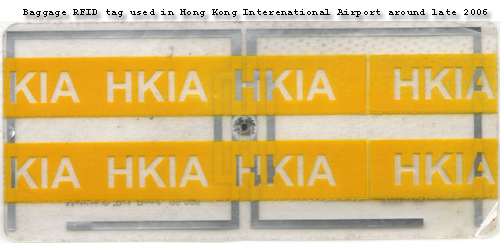-
An
automatic identification technology that uses radio frequency
-
A
RFID system consists of tag(s), reader(s) and a backend
system
-
A
tag consists of an IC chip, an antenna and the inlay
-
Antenna
size determines the tag size, or the device such as cell
phone determines the size of the antenna (intenna)
-
Antenna
can be designed to fit different applications
-
There
are two kinds of tags, active and passive. Active tags
have battery built in and passive ones do not. Passive
tags derive power from the reader signal
-
Tags
can be read (and be written) by RFID readers without seeing
it
-
Tags
are resistant to dirt and not easily damaged by rain
-
Tags
can be read at high speed (eg, over 50 items per second)
-
A
reader is used to read out data stored on the tag (IC
chip). It is also responsible to deliver power to passive
tags
-
Most
common RFID systems use HF (13.5MHz) or UHF (869MHz in
Europe, 915MHz in the USA)
-
License
is not required if the antenna output power is less than
the maximum allowable limit (eg, 2 watts in the USA)
-
In
a passive system, the higher the reader power used, the
longer the distance a tag can be read
-
For
HF systems, read distance is generally a few centimeters.
For UHF systems, read distance can be up to a few meters
-
RFID
will be used by Department of Defense, big retailer chains
like Wal-Mart in the US, Metro in Germany, Tesco in the
UK and big manufacturers like Gillette and P&G
-
Metal, water, working environment and nearby interference
can create problems to a UHF RFID system



